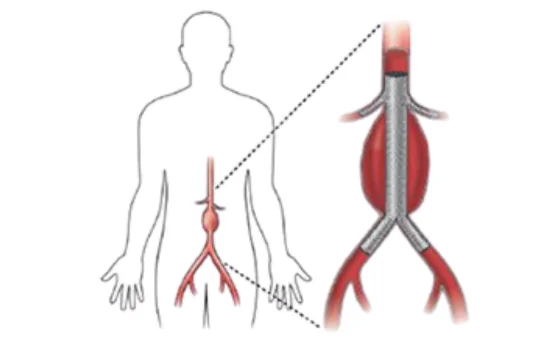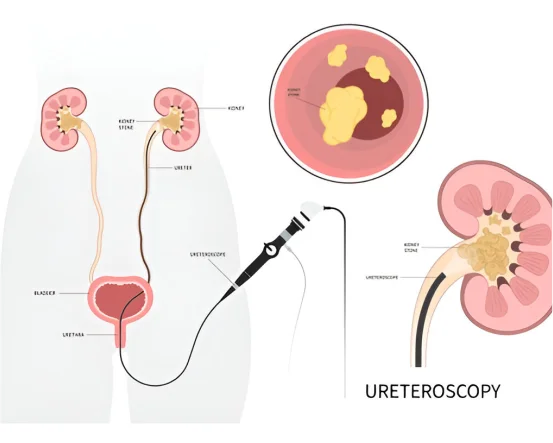Introduction
Endovascular surgery is a revolutionary, minimally invasive surgical technique used to treat blood vessel problems from within the blood vessels themselves—without large incisions. It has become a game-changer in modern vascular medicine, allowing patients to recover faster and with fewer complications than traditional open surgeries.
What is Endovascular Surgery?
Endovascular surgery is a type of surgery performed using catheters (thin tubes), wires, balloons, and stents inserted through small incisions into the blood vessels to treat vascular diseases. Unlike open surgery, which involves cutting open the body to reach the affected area, endovascular procedures are done through the skin, typically using the femoral artery (in the groin) or radial artery (in the wrist).
The word “endovascular” literally means “inside the blood vessels.”
Conditions Treated with Endovascular Surgery
Endovascular surgery is commonly used to treat:
- Aneurysms (abnormal bulging of arteries, such as abdominal or thoracic aortic aneurysm)
- Peripheral Artery Disease (PAD) – narrowed or blocked arteries in the legs
- Carotid Artery Disease – blocked arteries in the neck
- Deep Vein Thrombosis (DVT)
- Arteriovenous Malformations (AVMs)
- Varicose Veins
- Chronic Venous Insufficiency
- Pulmonary Embolism (PE)
- Blocked renal (kidney) arteries
Common Endovascular Procedures
Some of the frequently performed endovascular procedures include:
- Angioplasty :- A small balloon is inflated inside the narrowed or blocked artery to widen it and improve blood flow.
- Stent Placement :- A small mesh tube (stent) is placed inside the artery to keep it open permanently after angioplasty.
- Endovascular Aneurysm Repair (EVAR) :- Used to treat aneurysms by placing a stent graft inside the aorta to reinforce the blood vessel wall and prevent rupture.
- Thrombectomy :- Removal of blood clots from arteries or veins using catheter-based devices.
- Embolization :- Blocking abnormal or bleeding blood vessels, often used to treat tumors, AVMs, or uterine fibroids.
- Atherectomy :- Removes plaque from artery walls using a catheter with a tiny rotating blade or laser.
Who Needs Endovascular Surgery?
Doctors may recommend endovascular surgery for patients who:
- Have blocked or narrowed arteries
- Suffer from poor blood flow in limbs or organs
- Are not fit for open surgery due to age or other health conditions
- Need urgent treatment for aneurysms or clots
- Have vascular conditions that can be corrected without open surgery
It is especially beneficial for patients with diabetes, heart disease, or kidney disease, where open surgery poses higher risks.
How is Endovascular Surgery Performed?
Step-by-step Overview:
- Preparation
- Local or general anesthesia is given.
- Imaging tests (like CT angiogram) are used to locate the problem.
- Access Site
- A small incision is made, usually in the groin or wrist.
- A small incision is made, usually in the groin or wrist.
- Catheter Insertion
- A catheter is inserted into the blood vessel and guided to the problem area using X-ray imaging.
- A catheter is inserted into the blood vessel and guided to the problem area using X-ray imaging.
- Treatment
- Depending on the condition, a balloon is inflated, a stent is placed, a clot is removed, or an aneurysm is sealed.
- Depending on the condition, a balloon is inflated, a stent is placed, a clot is removed, or an aneurysm is sealed.
- Closure
- The catheter is removed, and the incision is sealed with pressure, glue, or a closure device.
- Monitoring
- The patient is observed for a few hours and usually discharged the same or next day.
- The patient is observed for a few hours and usually discharged the same or next day.
Benefits of Endovascular Surgery
Endovascular surgery offers several advantages over traditional open surgery:
- Minimally Invasive :- Requires only a small incision.
- Less Pain :- Reduced trauma to surrounding tissue.
- Faster Recovery :- Most patients return home within 24–48 hours.
- Shorter Hospital Stay :- Often done as a day-care or 1-day procedure.
- Lower Risk of Infection :- No large wounds or surgical exposure.
- Suitable for High-Risk Patients :- Safer for elderly or patients with comorbidities.
- Better Cosmetic Outcome :- Minimal scarring.
Risks and Complications
While generally safe, endovascular surgery carries some risks:
- Bleeding or bruising at the insertion site
- Blood clots or stroke
- Infection
- Damage to the blood vessel
- Allergic reaction to contrast dye
- Device migration or failure (especially stents or grafts)
- Need for repeat procedures
Risk is lower when performed by experienced vascular specialists.
Recovery After Endovascular Surgery
Immediate Recovery:
- Patients are usually kept under observation for a few hours.
- You may feel mild soreness or bruising at the puncture site.
- Walking is encouraged the same day or next day.
At-Home Recovery:
- Avoid lifting heavy weights for a week.
- Resume regular activity within 3–7 days.
- Keep the insertion site clean and dry.
- Monitor for symptoms like swelling, redness, or fever.
Follow-Up:
- Regular check-ups may include imaging (ultrasound, CT, or angiogram) to assess the success of the procedure.
- Medication like blood thinners or cholesterol-lowering drugs may be prescribed.
When to Call a Doctor
Seek immediate help if you notice:
- Swelling or bleeding at the insertion site
- Severe pain in the legs or chest
- Fever or chills
- Sudden weakness or numbness
- Difficulty breathing
These may indicate complications that require urgent care.
Why Endovascular Surgery Is the Future
Medical technology is evolving rapidly, and endovascular techniques are at the forefront of this transformation. The ability to treat vascular diseases without the need for open surgery not only improves patient outcomes but also lowers healthcare costs, reduces hospitalization, and minimizes complications.
It is now the preferred method for many vascular surgeons and patients alike—offering both safety and efficiency.
Conclusion
Endovascular surgery is a life-saving, minimally invasive option for treating a wide range of vascular diseases. Whether you’re dealing with an aneurysm, blocked artery, or deep vein thrombosis, this procedure offers a safer, faster alternative to traditional surgery.
Always consult a qualified vascular surgeon or interventional radiologist to determine if endovascular surgery is right for your condition. With the right care and timely treatment, you can achieve excellent outcomes and return to a healthier, active life.























